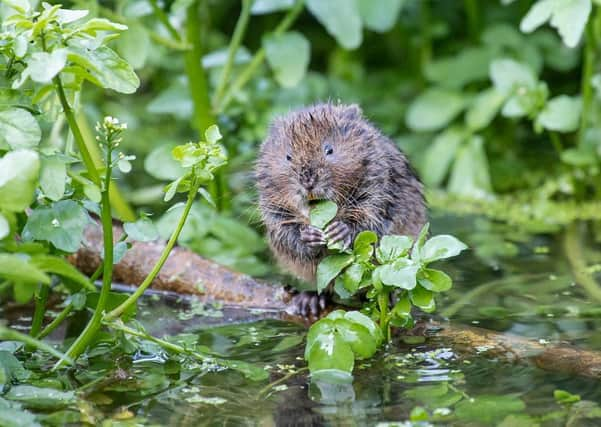New ponds for wildlife at Nidderdale


Four large new ponds have been constructed to provide a variety of habitats for wildlife.
Philip Tennyson, countryside and recreation coordinator at Yorkshire Water, said: “Timble Ings woods is a perfect habitat for a wide variety of species and the new ponds will further enhance the habitat in the AONB.
Advertisement
Hide AdAdvertisement
Hide Ad“We have introduced around 200 voles to the area over the last 12 months and the ponds will help the population to thrive and expand throughout the area.
“As well as the water voles, the new ponds will provide new habitats for the local population of dragonflies, butterflies, newts and all kinds of other wildlife that relies on ponds.
“We are intending to dig ponds intermittently over the coming years to provide a wide variety of habitats, from older established ponds to new ponds with emergent plants and more open water.”
This project is part of the Yorkshire Water’s £1.6m Water Works for Wildlife initiative to deliver biodiversity enhancements to 15 designated local wildlife sites across the region in the next four years.
Advertisement
Hide AdAdvertisement
Hide AdThe sites have some of the rarest wildlife and accessibility. The same programme saw the creation of a new wading bird habitat at nearby Rodley Nature Reserve in March which has been acclaimed.
Kelly Harmar, biodiversity officer at Nidderdale AONB, said: “Ponds are a vital habitat for a wide range of wildlife in the AONB and we’re delighted Yorkshire Water is creating more at Timble Ings.
“Ponds have a lifecycle, and, without intervention, most will gradually fill with sediment over time. Each stage of the pond cycle has value, with different animals and plants favouring different conditions.
“Digging new ponds allows the creation of open water habitat without disturbing existing pond habitats, providing room for the new vole population to expand and maximising the wildlife that the site can support.”